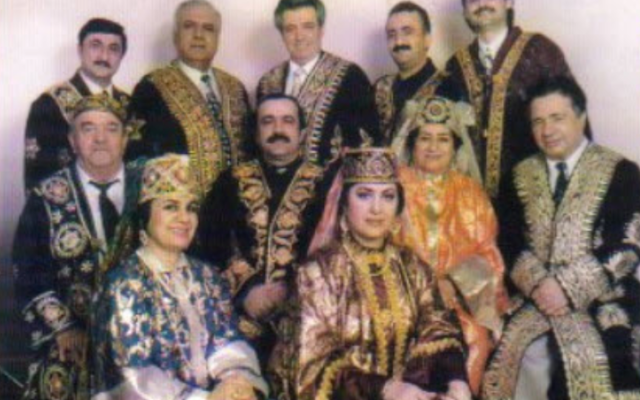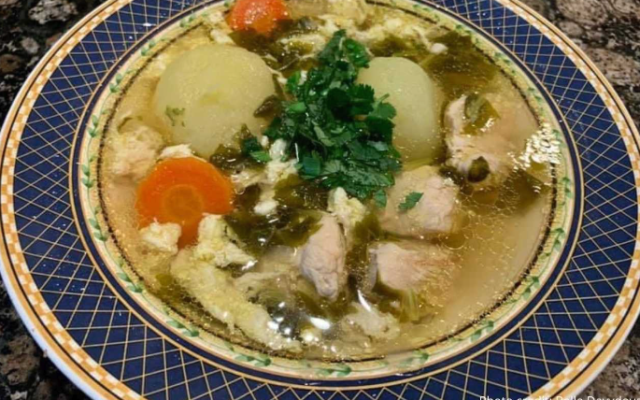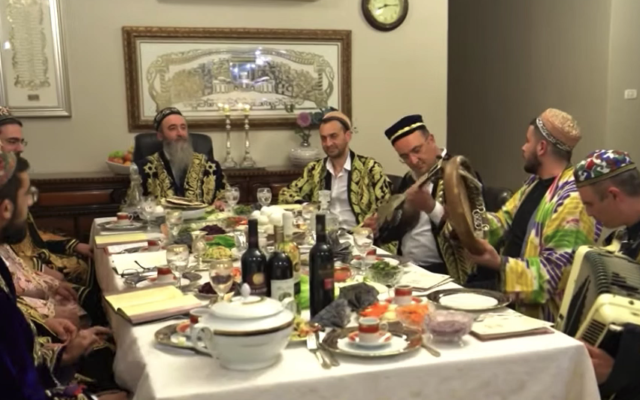Bukharen Passover is a Celebration Fit for Kings
The ritual of the seder is a reimagining of the ritual as a royal feast.
For Bukharen Jews in the Central Asian nation of Tajikistan, the Passover seder’s major theme of freedom after 400 years of oppression is not an abstraction. They, too, suffered more than four centuries of hardship that included social and political ostracism by fundamentalist Muslims in the 16th century and the antisemitic campaigns by successive governments of the Soviet Union in the 20th century.
Most Jews of Central Asia left as soon as they could, beginning in the early 1970s when Jewish immigration restrictions were relaxed. Many went to Israel, where today an estimated 150,000 Bukharen Jews live, and the United States, and where another 75,000 have found homes. They live mostly in the Forest Hills section of Queens in New York City or in the Rego Park neighborhood. The community is often called “Regostan” by their New York neighbors.

They’ve also settled in Atlanta, where nearly eight years ago they opened a synagogue, Congregation Beit Yitzhak, in Norcross. It has an impressive interior created by a team of Central Asian craftsmen who labored for months to design the elaborate wood carving and decorative accents that distinguish the worship center.
Rabbi Yisrael Zelman has served as an interim rabbi for the community. Although he is not native to Tajikistan, each year he holds a seder where all are invited, both his Ashkenazic friends with gefilte fish as starters, and his Bukharen congregants with their fried fish showered with chopped parsley. The Bukharens have their Oshi Masozgoshak, or vegetable beef soup, with dried Persian sour plums, sorrel leaves and beaten eggs served over cracked matzos in place of matzo ball in chicken broth.
And because the community observes the exception to Jewish law that allows Sephardic and Mizrachi Jews to eat rice and beans, there are always bounteous plates of plov, a pilaf of rice, carrots and chickpeas that is often scented with the favored spices of cumin and paprika. Unlike the charoses most American Jews make, with a rough texture of chopped apples and nuts, the Bukharen version, called “chalika” is more like a smooth sweet paste.
According to Rabbi Zelman the Bukharen approach to the holiday is one of joyous and youthful enthusiasm, without regard to age for physical limitations. It is a customary celebration fit for royalty.
“They say in their Passover Haggadah that they are young people until the end of their lives,” according to Rabbi Zelman, “without any weaknesses of old age. They are not poor, but rich. And they feel special, as if they are kings for this one night of Passover.”
Instead of the classic Passover Hebrew melody, Ehad Mi Yodea, or “Who Knows One,” they sing in the Judeo-Tadjik dialect, Yakumin Ki Medonad that honors the spiritual freedom granted by G-d.
The men who are grouped around the table are seated according to age, the oldest sit closer to the host and all of them wear the traditional jomah, or ceremonial jacket or robe. Rabbi Zelman, who was born in Moscow and earned his ordination in Jerusalem, was presented his joma to honor his service to the community.
The design is usually in a rich color and fabric, accented by intricate designs of gold braid. Some may have six-pointed Jewish stars or multi-branched menorahs woven into the pattern. All males wear the decorative Bukharian skull caps, often made of silk, with floral embroidery.
Again, it’s from a time that recalls how Jews, under Muslim rule, were forced to wear a yellow hat or a Star of David to distinguish them as second-class citizens. Their medieval fundamentalist rulers required tax collectors, by law, to slap the face of Jews who were paying the special tax that was collected from them each year. Jews used their skill as fabricators of fine silk to make for themselves fine head coverings as a sign that they were at the seder table and were no longer beholden to human oppressors.

Oshi Masozgoshak – Traditional Bukharian Soup
This recipe comes from “Classic Central Asian (Bukharian) Jewish Cuisine and Customs” by Amnun Kimyagarov.
Serves 8 to 10
3 tablespoons vegetable oil
2 cups coarsely chopped onions
1¼ pounds veal stew, beef stew, or chicken thighs ¼-inch pieces
12 cups homemade plain veal, beef, or chicken broth or water
Bones (2 bones from chicken thighs, or 1 from veal or beef)
2 teaspoons sea salt
3 to 4 generous grindings of black pepper
¾ pound carrots (about 2 cups large cubes)
¾ pound potatoes, (about 2 cups large cubes)
1½ cups Persian dried sour plums or dried apricots with lemon juice
2 cups finely chopped sorrel or coriander leaves
6 large eggs, lightly beaten
For serving:
4 squares matzah, broken into 2-inch pieces
Instructions
Heat oil in a large sauce pan. Reduce to a medium-high heat and mix in onions. Cook for 5 to 7 minutes until very soft but not browned.
Add meat and mix well. Cook meat, it loses its color, about 5 minutes.
Add broth (or water), and bone(s), salt, and pepper, bring to boil over high heat. Simmer for 15 minutes, uncovered.
Add the whole dried plums or apricots and continue to simmer for 15 minutes uncovered.
Add the carrots and potatoes and chopped sorrel (or coriander leaves). Cook 10 minutes over medium heat, just until potatoes and carrots can be easily pierced by a fork.
Slowly add the beaten eggs while stirring until eggs become long strands like egg drop soup, about 1 minute. Remove from heat and serve immediately into individual soup bowls with about ½ a square matzah broken up into each bowl.




comments